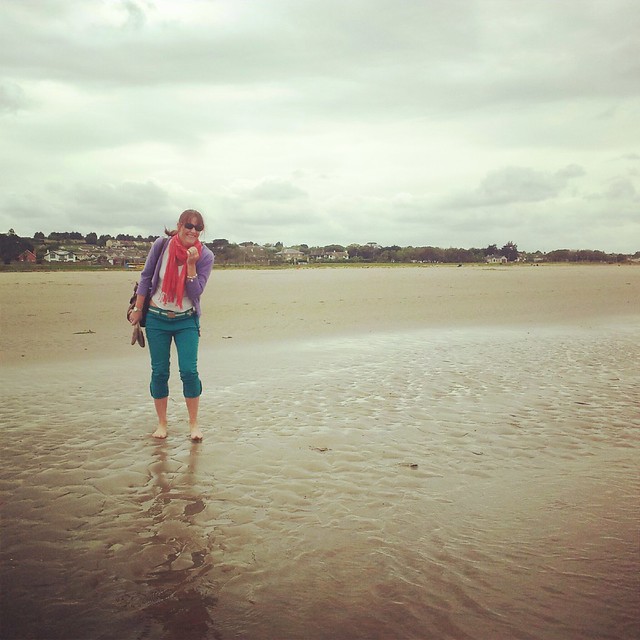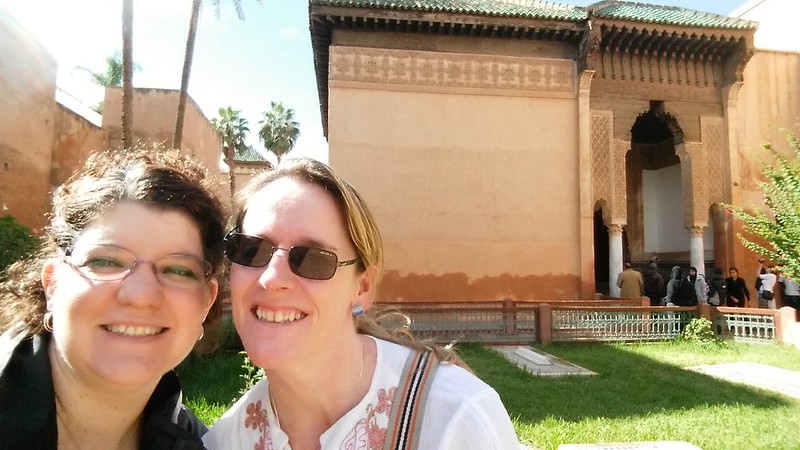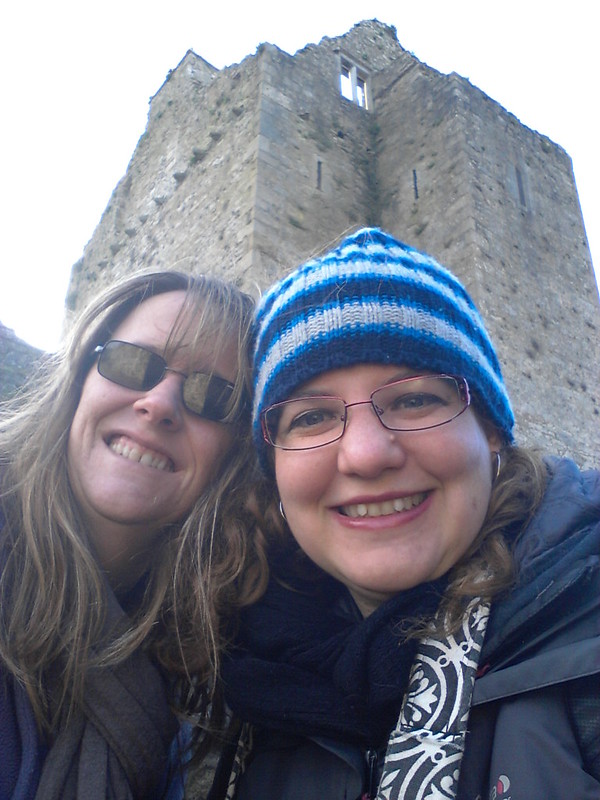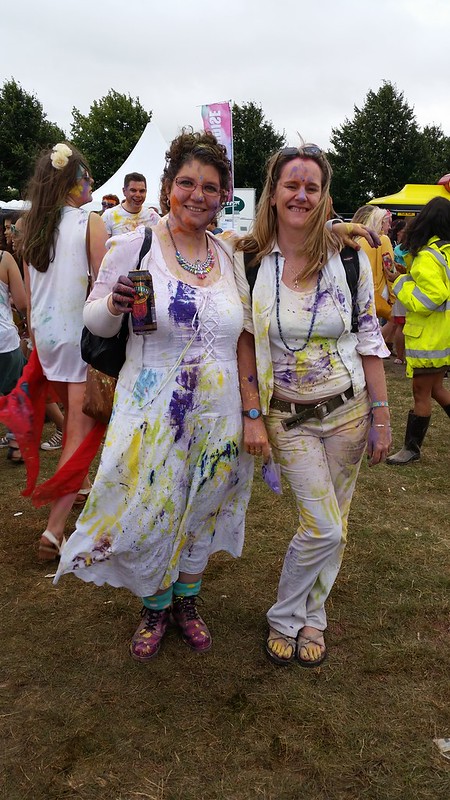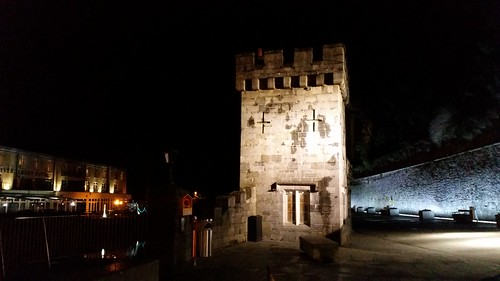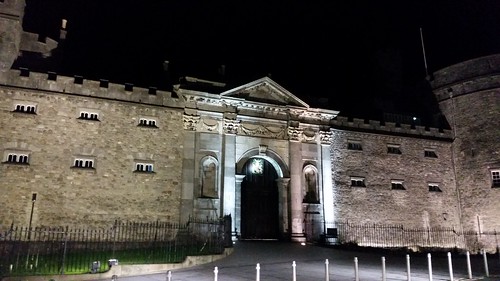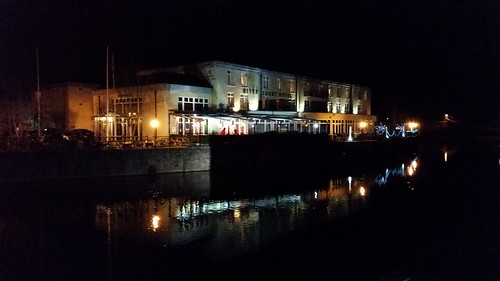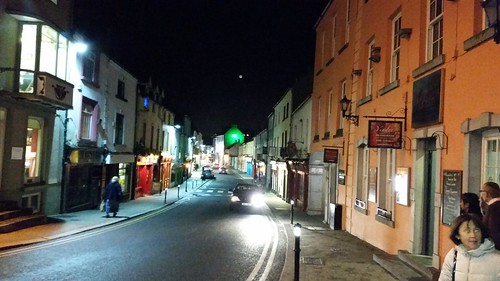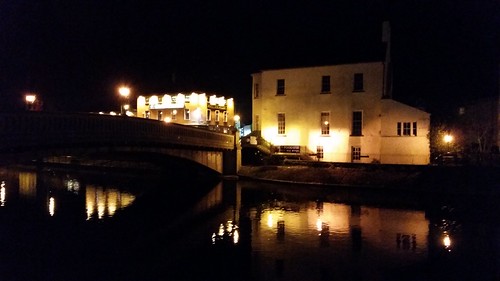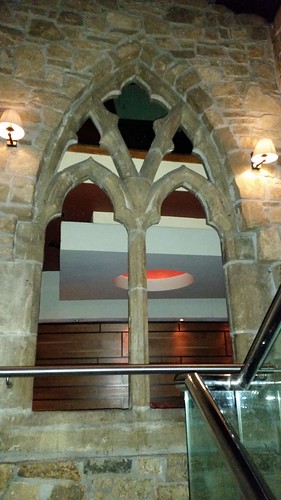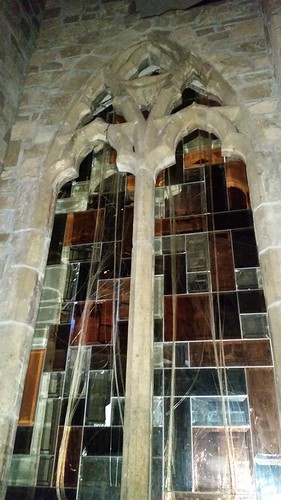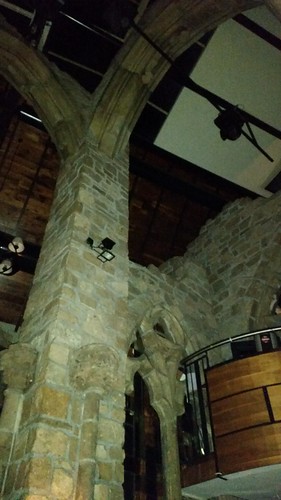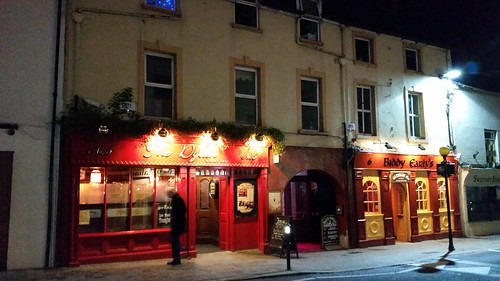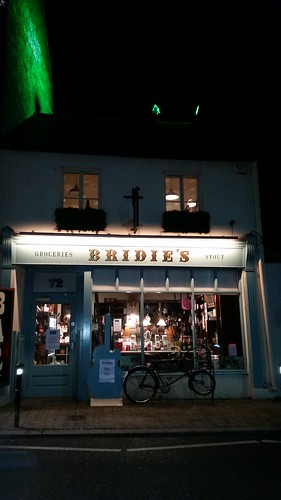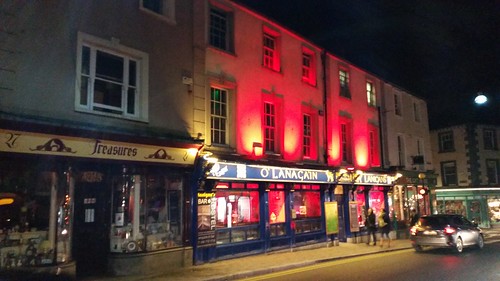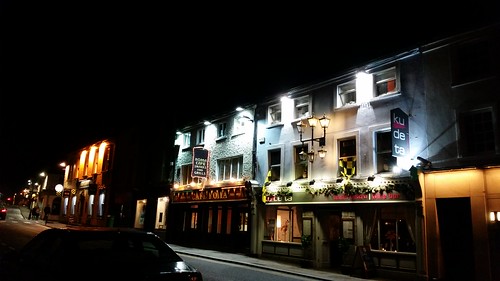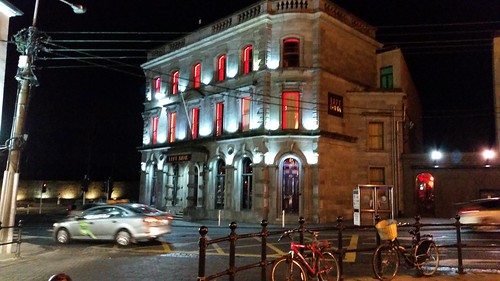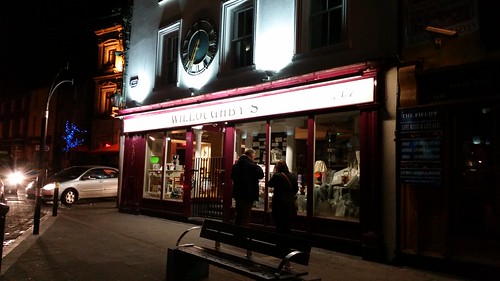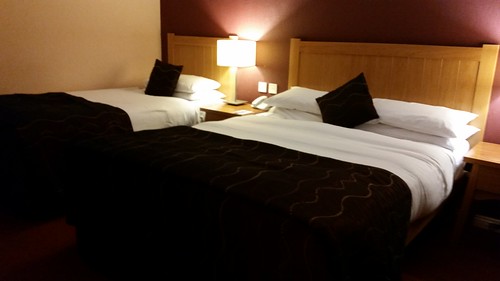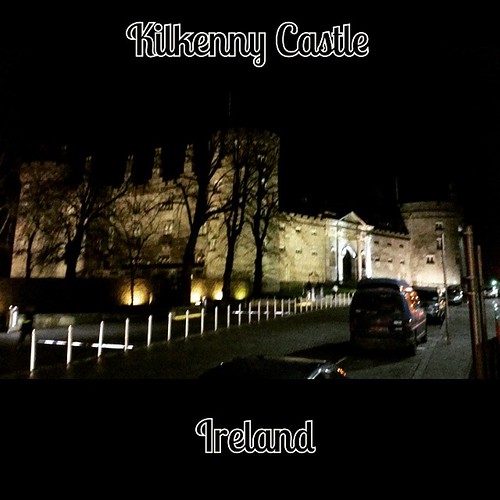
Yesterday, I mentioned a little bit about a day trip that my friend B and I took back in January. From the Rock of Dunamase (former home of Strongbow and Aoife), we drove through Abbyleix (an old 1700’s planned mill town) a second time, and then to Kilkenny (a secondary residence of Strongbow). Now I’ve been to Kilkenny for a few hours once before with my friend AB & her son, but this time, I was there for a bit longer, and I have to say I really enjoyed it.

The River Nore
Kilkenny, Ireland is about a 2 hour drive from Dublin, and it’s a pretty, well kept, walkable middle ages town. It’s known as the “marble city” because when Italian marble became too expensive / scarce to Ireland, the black limestone mined from Kilkenny could be shined up to look like marble – and cost much less. Thus, for many years the locals were put to good use in the stone cutting / carving industry.
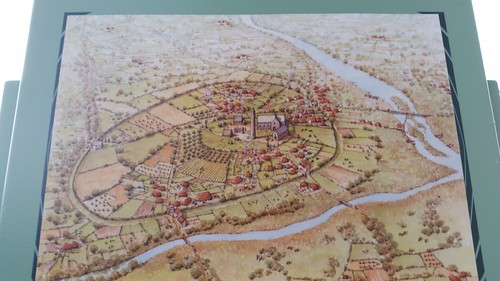
the old city walls
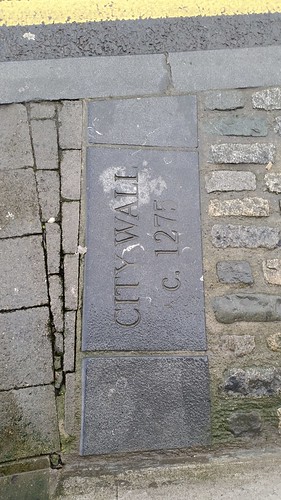
A little history. The populated area around Kilkenny dates back to the Mesolithic and Bronze age and it was most likely settled due to the large flat river Nore making a bend here. However, the “modern day” founding of the town was originally based around a Church settlement with a round tower – St. Canice’s Cathedral in the 6th century. The Cathedral’s round tower was added in the 9th century, and can be climbed to the top as it is intact, despite the Viking raids in 1085 and 1114 where the settlement burnt. (The present day church dates to the 1300s, and wasn’t open when we were there, thus no internal pictures.)
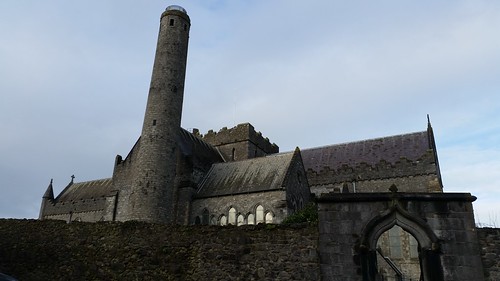
St. Canice’s Cathedral and Round tower
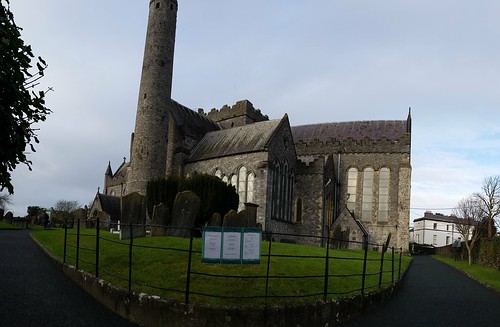

In the 1100’s, the initial Norman fortification – a wooden fort – near Kilkenny Castle was constructed by Richard de Clare (better known as Strongbow), and then in 1185, reconstructed by William Marshal (married to Strongbow’s daughter Isobel) with the stone castle being completed in 1213. Remnants of the castle (the three round towers) have subsequently been incorporated into the modern incarnation of the castle – which was updated in 1385, and again in the 14-1500s, then added to with a more formal palace and gardens in the 1700’s. It was in the 14-1500’s that the castle came into the hands of the Butler Family (Margaret Butler was the grandmother of Anne Boelyn of Henry VIII fame) and held onto by the Butler family until 1935. It was sold in the 1960s to the OPW (Office of Public Works) and has since 1990s gone extensive archaeology and restoration – and today can be toured for a nominal fee. (Well worth the tour!)
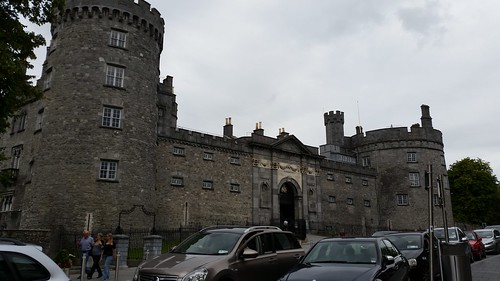
The Kilkenny Castle and 2 of 3 of original round towers
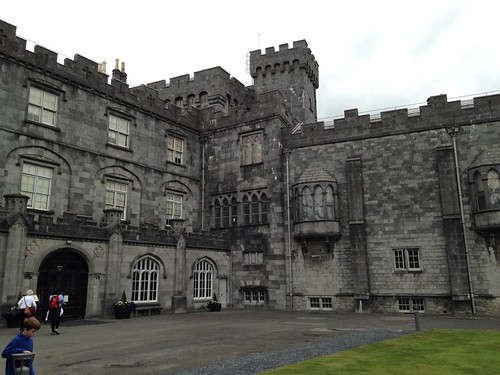
Inside the courtyard of the castle
As the town grew, it was mentioned in manuscripts from the 13th century onwards, and in particular, the ravaging of the town by the black death (bubonic plague) in 1348 which left somewhere around 100 people alive. By this time, the area around the St. Canice’s Cathedral was known as “irishtown” (local Irish lived there) and the area around the castle was known as “High town” (where the Anglo-Normans lived). In 1609, King James granted Kilkenny a Royal charter as a city, and in 1689-1690, King James II of England stayed in the Kilkenny Castle while fighting against the Cromwellian Army.
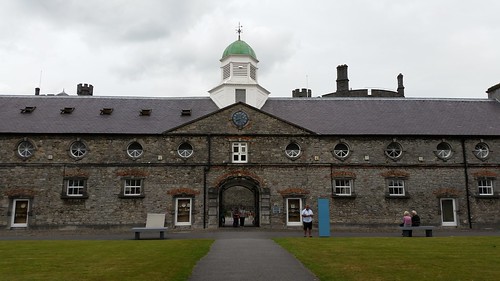
The Coach House / Craft village
Today, Kilkenny is known as a place that Dubliners go on holiday, and for stag parties. There’s a huge craft village (Kilkenny design workshops) that is housed in the former castle coach houses / stables. There’s also lots of fishing, boat cruises up the river, a cave to visit, waterfalls, and big houses.
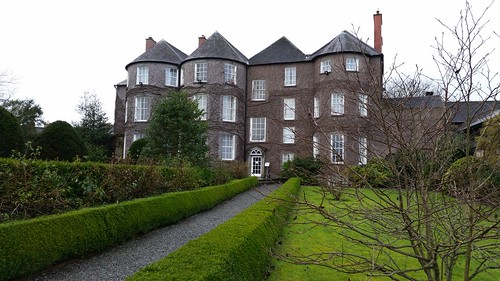
The Butler house and formal gardens
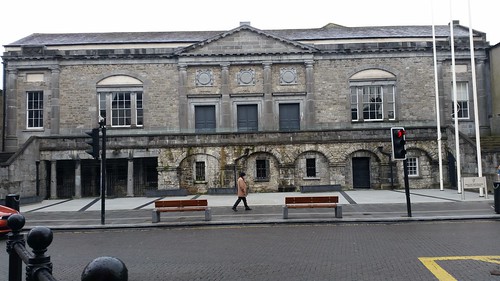
The old Kilkenny Jail / courthouse

an Old Mill in Kilkenny
Local events that are held in the spring and summer include music an food festivals. There’s also a large number of pubs in and around the center of the main town area – all of which are walkable. (For the population – I am surprised how many there are – more on that tomorrow – when I take you around a bit of Kilkenny at night!).
